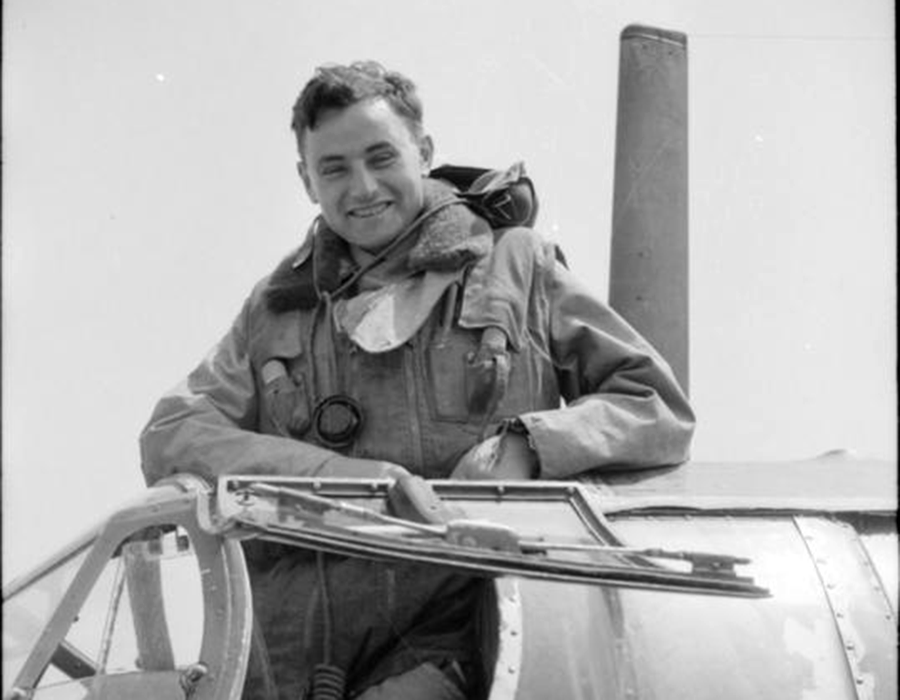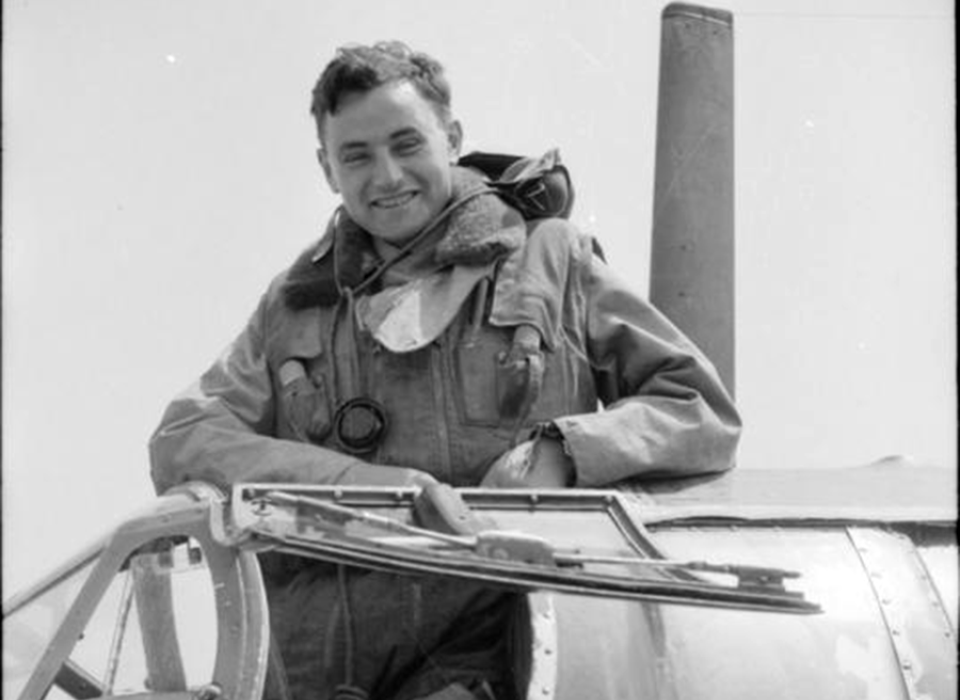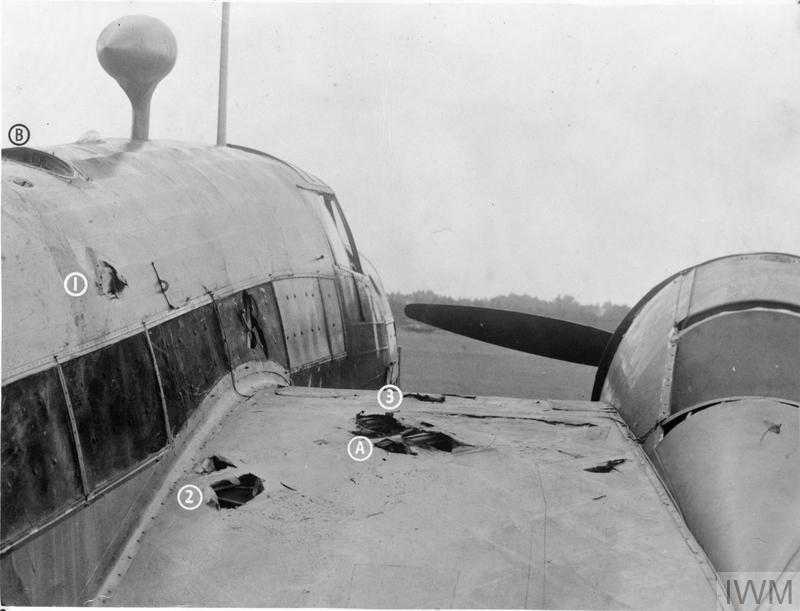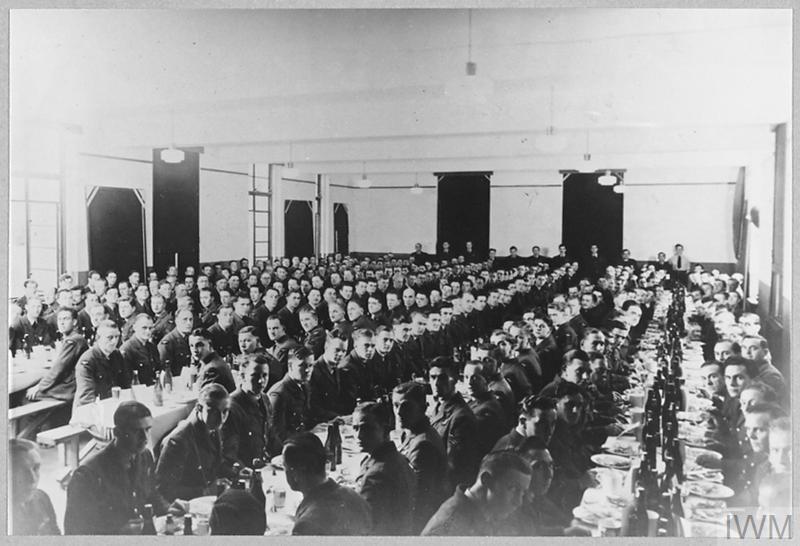

Sergeant James Allan Ward of No. 75 (New Zealand) Squadron RAF, the first New Zealander to win the Victoria Cross during World War II, standing in the cockpit of his Vickers Wellington Mark IC, L7818 ‘AA-V,’ at Feltwell, Norfolk. Imperial War Museum.
When James Allen Ward was growing up in Whanganui, New Zealand, he wanted nothing more than to be a teacher. The outbreak of World War II changed that. At the age of 21, Ward put his plans on hold to join the Royal New Zealand Air Force as a pilot. He began training on July 1, 1940, at Levin Initial Training Wing with later instruction at No. 1 Elementary Flying Training school at Taieri. After six months of training, Ward, known to friends as Jimmy, earned his wings and was promoted to Sergeant. He was given two weeks of embarkation leave to say goodbye to his family before boarding the ship Aorangi to Canada.
In March 1941, Ward finally reached Scotland, where he joined No. 75 Squadron in the Royal Air Force. This bombing unit flew multiple operational sorties over Germany in their dual-engined Vickers Wellingtons. The Wellington was a unique aircraft as it used a geodetic structure covered largely by fabric instead of the usual ribs and spars.
Ward flew five successful bombing missions, but it wasn’t until his sixth that he became a legend among his peers. The ensuing Victoria Cross conferment report describes the flight over Munster best:
Air Ministry, 5th August 1941.
ROYAL AIR FORCE
The KING has been graciously pleased to confer the VICTORIA CROSS on the undermentioned airman in recognition of most conspicuous bravery: –NZ/401793 Sergeant James Allen Ward, Royal New Zealand Air Force, No. 75 (N.Z.) Squadron.
On the night of 7th July 1941, Sergeant Ward was second pilot of a Wellington returning from an attack on Munster. When flying over the Zuider Zee [bay of the North Sea in the Netherlands] at 13,000 feet, the aircraft was attacked from beneath by a Messerschmitt 110 which secured hits with cannon shell and incendiary bullets. The rear gunner was wounded in the foot but delivered a burst of fire which sent the enemy fighter down, apparently out of control.
Fire then broke out [on Ward’s plane] near the starboard engine and, fed by petrol from a split pipe, quickly gained an alarming hold and threatened to spread to the entire wing. The crew forced a hole in the fuselage and made strenuous efforts to reduce the fire with extinguishers and even the coffee in their vacuum flasks, but without success. They were then warned to be ready to abandon the aircraft.
As a last resort, Sergeant Ward volunteered to make an attempt to smother the fire with an engine cover which happened to be in use as a cushion. At first, he proposed to discard his parachute, to reduce wind resistance, but was finally persuaded to take it. A rope from the dinghy was tied to him, though this was of little help and might have become a danger had he been blown off the aircraft.
With the help of the navigator, he then climbed through the narrow astro-hatch and put on his parachute. The bomber was flying at a reduced speed but the wind pressure must have been sufficient to render the operation one of extreme difficulty.
Breaking the fabric to make hand and foot holds where necessary, and also taking advantage of existing holes in the fabric, Sergeant Ward succeeded in descending three feet to the wing and proceeding another three feet to a position behind the engine, despite the slipstream from the airscrew, which nearly blew him off the wing. Lying in this precarious position, he smothered the fire in the wing fabric and tried to push the cover into the hole in the wing and onto the leaking pipe from which the fire came. As soon as he removed his hand, however, the terrific wind blew the cover out and when he tried again, it was lost. Tired as he was, he was able with the navigator’s assistance, to make successfully the perilous journey back into the aircraft. There was now no danger of the fire spreading from the petrol pipe, as there was no fabric left nearby, and in due course it burnt itself out. When the aircraft was nearly home some petrol which had collected in the wing blazed up furiously but died down quite suddenly. A safe landing was then made despite the damage sustained by the aircraft. The flight home had been made possible by the gallant action of Sergeant Ward in extinguishing the fire on the wing in circumstances of the greatest difficulty and at the risk of his life.[3]

Close-up of the damage caused to Ward’s Vickers Wellington Mark IC, L7818 ‘AA-V,’ of No. 75 (New Zealand) Squadron RAF, at Feltwell, Norfolk, after returning from an attack on Munster, Germany, on the night of July 7–8, 1941. Imperial War Museum.
Both the pilot and the navigator performed admirably in returning the aircraft to base. Losing their radio during the attack, the navigator, Flight Lieutenant Lawton, guided the plane back to a friendly airfield. The pilot, Commander Widdowson, made a safe landing despite all the distractions. With their help, Ward became the first of only three New Zealanders to be awarded the Victoria Cross during World War II. When word came through that Ward was to receive the decoration, his comrades made the shy young man give a speech, in which he thanked the oft-forgotten ground crew and, blushing, returned to dinner.

A general view of the scene in the airmen’s dining hall when Sergeant James Allen Ward, VC., R.N.Z.A.F., was entertained to dinner by his Squadron. Sergeant Ward can be seen [fifth from left] facing the camera at the back of the picture. Imperial War Museum.
Sadly, Ward did not survive to receive his Victoria Cross. Two months after his heroic feat, he boarded a Wellington headed for Hamburg, and as the plane reached the city, it was spotted by searchlights and repeatedly hit by flak. Fire broke out instantly and engulfed the plane. As bomb captain, Ward ordered the crew to bail out of the plane. Jumping from the burning aircraft, members of the crew saw Ward for the last time, still manning the controls.
A month after his plane went down, Ward’s name was heard over the radio by his brother-in-law. The presenter was reading out a list of prisoners of war in Germany, giving hope to his family that he might still be alive. Unfortunately, the report was wrong, but his family would not learn the truth until a year later when the International Red Cross received word that Ward’s remains, recovered the night his plane was hit, had been interred at Ohlsdorf Cemetery in Hamburg. Upon learning the news, Ward’s brother, who was in England at the time, forwarded the information to his parents in New Zealand. On October 16, 1942, just over a year after Ward’s death, the Victoria Cross was presented to his parents in Wellington.